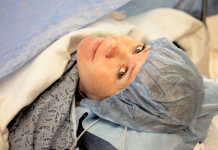
We thought we treated it appropriately. We followed the doctor’s initial recommendations for treating our son’s Lyme disease. He got a little better with the antibiotics but never went back to his normal self. It was nearly a year later when my husband attended a Lyme informational session at our library and we found out what was really going on.
I’ll never forget that night. He came home with stacks of paper and notes written in various places. He had an intense energy to have our son seen by a specialist an hour away because he knew exactly what was going on with our son: PANS.
It was the first time either one of us had heard of the term. Pediatric Acute-onset Neuropsychological Syndrome, or PANS, is a group of symptoms with a sudden onset comprised of OCD, tics, behavioral and/or neurological symptoms. PANS may occur within hours to days after an infection such as Lyme disease, the flu, chickenpox or mono. If it occurs after a strep infection, it is called PANDAS (Pediatric Autoimmune Neuropsychiatric Disorder Associated with Streptococcus).
What are the symptoms of PANS/PANDAS?
Parents often describe a sudden change in their child’s behavior, quite often overnight. Children may be afflicted with OCD, severe eating restrictions (ex. fear of swallowing, choking, or vomiting), anxiety, depression, sensory processing issues, motor and/or vocal tics, aggression and rage, sleep disturbances, increase in daytime urination and/or bedwetting at night or a marked decline in academic skills.

How is PANS/PANDAS diagnosed?
It is a clinical diagnosis of exclusion because the symptoms the child is experiencing cannot be explained by another neurological or medical disorder. There are official diagnostic criteria that must be met to receive a diagnosis and you can see the full list here.
What do I do if I think my child has PANS/PANDAS?
According to Gabrielle True, President of ASPIRE, most pediatricians are still unaware of this condition and may not do a correct diagnostic workup. You will need to be your child’s advocate by educating yourself about PANS/PANDAS and find a physician familiar with diagnosis and treatment. True states it is important to keep the “child’s medical history well-organized, including a description of symptoms and their onset prior to the first appointment with a PANS/PANDAS literate doctor.”
How is PANS/PANDAS treated?
Treating the infection, supporting the immune system and providing psychological support to the child and family are essential to adequately address the child’s complex symptoms. Often times, various treatment modalities must be used over months to years.
It is important to note barriers exist to proper diagnosis and treatment. Children are often misdiagnosed with various behavioral and medical issues such as ADHD, OCD, anxiety, depression, or even autism. The child’s age can also be a factor as one may not notice a handwriting regression or intrusive thoughts in a 3-year-old.
It has been a bumpy road but I am happy to report our son is doing amazing today, thanks to the support from our amazing providers, family, and friends.










